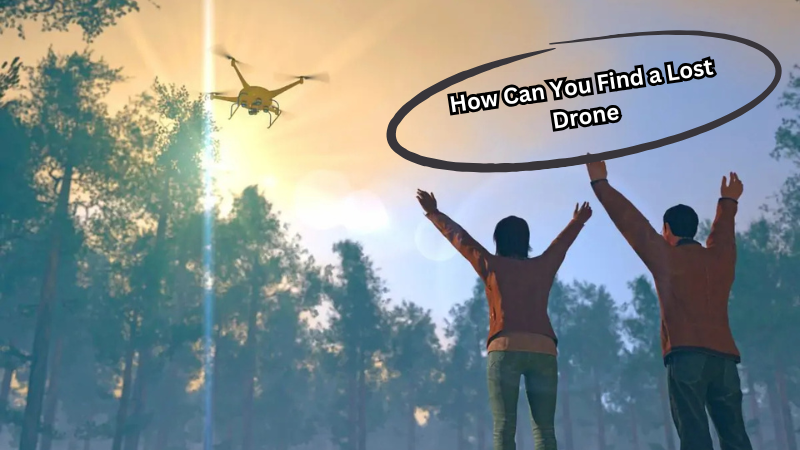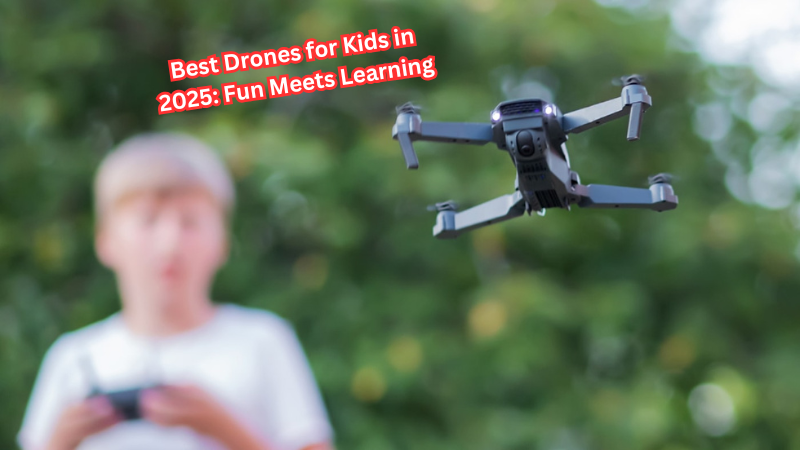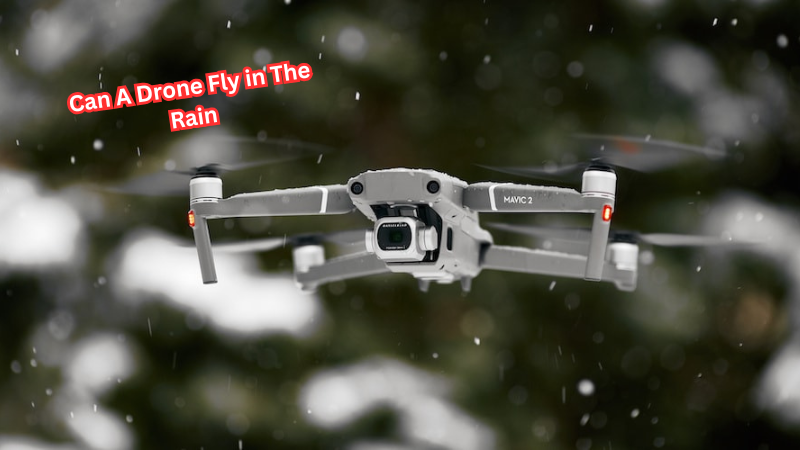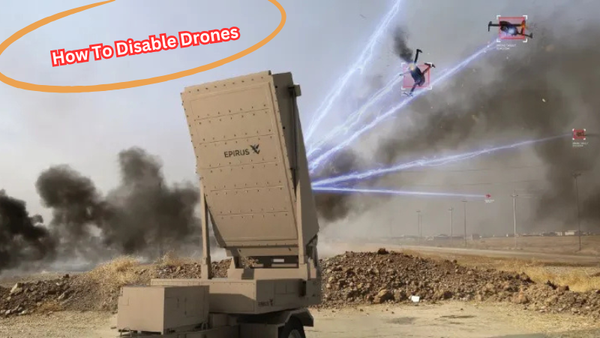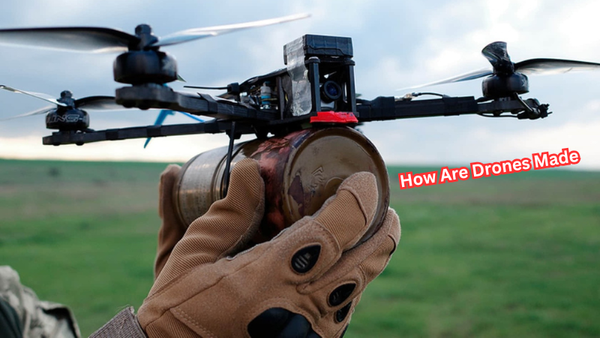Losing a drone is a frustrating yet common experience for many drone enthusiasts. One moment it’s soaring effortlessly, and the next, it’s out of sight, leaving you in a moment of panic.
Whether caused by strong winds, technical malfunctions, or simply flying it beyond your line of sight, losing a drone can feel overwhelming. However, quick thinking and the right approach can significantly improve your chances of recovery.
By retracing your steps, leveraging technology like GPS or tracker apps, and even involving the local community, you can locate your lost drone more efficiently. Additionally, simple preventive measures can help avoid future incidents, offering peace of mind and uninterrupted enjoyment of flying your drone.
Overview Done
Drones are more than just expensive gadgets; they serve various purposes, from recreational use to professional aerial photography or even search and rescue operations. The cost of losing one, along with the potential damage it could cause, makes finding a lost drone a top priority for any owner.
Fortunately, there are several methods you can employ to increase your chances of recovering a lost drone. In this guide, we’ll discuss some practical tips and tricks on how you can find a lost drone.
Types of Drones
Before diving into how to find a lost drone, it’s essential to understand the different types of drones available in the market. Drones have become increasingly popular over the years, with various types designed for specific purposes. The most common types of drones include:
- Multirotor drones: These are the most popular type of consumer drones, known for their stability and maneuverability.
- Fixed-wing drones: These are more commonly used for professional purposes such as surveying and mapping.
- Single rotor helicopters: Similar to multirotor drones, these are larger and often used for heavy lifting or industrial purposes.
- Hybrid VTOL (Vertical Takeoff and Landing) drones: Combining features from both fixed-wing and multirotor drones, these are designed to take off and land vertically but can also transition into traditional horizontal flight.
Understanding the type of drone you have will help narrow down your search options and determine the best approach for finding it.
How a Drone Works
To increase your chances of finding a lost drone, it’s also important to have a basic understanding of how drones work. While the specifics may vary depending on the type and model, most drones operate similarly. They are controlled remotely via radio frequency signals from a controller or through a smartphone app.
These signals tell the drone when to move, change direction, and perform other actions. Drones also have internal sensors like accelerometers and gyroscopes that help maintain stability and prevent crashes.
Additionally, most drones come equipped with a GPS that allows for precise navigation and can be used for tracking. This will be crucial in the event of a lost drone.
How Can You Find a Lost Drone
Now we come to the heart of the matter - how can you find a lost drone? Losing a drone can feel overwhelming and hopeless, but there are several steps you can take to increase your chances of recovery.
Retrace Your Steps
The first step in finding a lost drone is retracing your steps. Think back to where you were flying and try to visualize its flight path. This may help narrow down potential areas where it could have crashed or landed. If possible, revisit the location and look around for any signs of the drone.
Use Technology
Technology has advanced significantly over the years, making it easier to track and locate lost drones. Some drones come with built-in GPS systems that can provide the exact location of the drone. If your drone doesn’t have this feature, you can also attach a GPS tracker to it. This will allow you to track its movements and potentially locate it.
There are also several apps available that can help track lost drones, such as DroneTracker and Pix4Dcatch for DJI drones. These apps use GPS and other technologies to provide real-time tracking of your drone’s location.
Involve the Community
Involving the community in your search efforts can greatly increase your chances of finding a lost drone. Reach out to local hobbyist clubs or groups, online forums, and social media platforms dedicated to drones. Many experienced flyers are more than willing to lend a helping hand and share their expertise in locating lost drones.
You can also post flyers in the area where you lost your drone, with information about the model, any distinguishing features, and contact details. This may catch the attention of someone who has found your drone or knows its whereabouts.
Search Hard-to-Reach Areas Safely
If your drone is still missing despite your best efforts, it’s important to search hard-to-reach areas safely. Do not put yourself in danger by attempting to retrieve your drone from a dangerous location such as a tree or body of water. Seek professional help or use tools like extendable poles or drones equipped with nets to retrieve the lost drone.
Preventing Future Incidents
While it’s important to know how to find a lost drone, taking preventative measures can save you from this hassle in the first place. Here are some tips for preventing future incidents:
- Fly in Open Areas: When flying your drone, make sure to choose open areas with minimal obstacles. This will reduce the chances of losing control or hitting something and crashing.
- Maintain Line of Sight: Always keep your drone within your line of sight. By doing so, you’ll be aware of any potential hazards and have better control over its movements.
- Check Weather Conditions: Strong winds, rain, and other weather conditions can significantly affect the flight capabilities of a drone. Always check the weather before flying and avoid adverse conditions.
- Use Return-to-Home Feature: Many drones come with a return-to-home feature that uses GPS to bring the drone back to its takeoff point. This can be especially useful in case of signal loss or low battery.
- Keep Batteries Charged: Always make sure your batteries are fully charged before flying. Low battery levels can cause a sudden loss of power, resulting in a crash.
- Regular Maintenance: Keep your drone well-maintained by regularly checking for any signs of wear and tear. Replace parts as needed and perform software updates to ensure optimal performance.
By following these preventive measures, you can reduce the chances of losing your drone and minimize the risk of accidents.
How to Keep Your Drone Safe and Secure
Aside from preventing accidents, ensuring the safety and security of your drone is also important. Here are some tips to help keep your drone safe:
- Register Your Drone: Depending on where you live, you may need to register your drone with the local aviation authority. This ensures that you are flying legally and can help in case your drone gets lost or stolen.
- Invest in Anti-Theft Devices: There are several anti-theft options available for drones such as GPS trackers, alarms, and even fingerprint locks. These can provide an extra layer of protection against theft.
- Be Mindful of Laws and Regulations: It’s important to familiarize yourself with the laws and regulations surrounding drone usage in your area. This can help you avoid any legal issues and ensure the safety of others.
- Insure Your Drone: Consider investing in insurance for your drone, especially if it is an expensive model. This can provide financial protection in case of accidents, loss, or theft.
- Keep It Out of Sight When Not In Use: When you’re not using your drone, keep it stored safely out of sight to prevent any potential theft or damage.
By taking these precautions, you can protect your investment and enjoy flying your drone with peace of mind. While losing a drone may seem like a daunting experience, knowing how to find it and preventing future incidents can make all the difference.
Does Every Drone Have a Trace System?
Not all drones come with built-in GPS or tracking systems, but there are options available to add these features. Some drone manufacturers offer additional accessories such as GPS modules or trackers that can be attached to your drone. There are also third-party companies that specialize in creating tracking devices specifically for drones.
It’s important to do research and choose the best option for your specific drone model and needs. However, it’s always a good idea to have some form of trace system in case your drone gets lost or stolen.
Advantages Of Using Drones
Aside from the risks and challenges that come with owning a drone, there are many advantages to using them. Some of these include:
- Aerial Photography and Videography: Drones can capture stunning aerial shots and videos that would be difficult or impossible to achieve with traditional cameras.
- Surveying and Mapping: With their ability to fly over large areas quickly, drones are becoming increasingly popular for surveying and mapping purposes in various industries such as construction, agriculture, and real estate.
- Search and Rescue Operations: Drones equipped with thermal imaging or other advanced technologies can assist in search and rescue operations by quickly locating missing persons or providing an aerial view of a disaster area.
- Delivery Services: Companies such as Amazon and UPS are experimenting with using drones for delivery of packages in certain areas, which can lead to faster and more efficient delivery services.
- Environmental Monitoring: Drones can be used to monitor environmental conditions, wildlife populations, and natural disasters without disturbing the area or putting people at risk.
FAQs
How can you locate a missing drone using GPS coordinates?
To find a missing drone, you can check its GPS coordinates provided by the telemetry data. These are often accessible through the remote controller or a connected app. Make sure the drone's battery still has some power to transmit a GPS signal.
What should you do if a drone crash happens outside the controller's signal range?
If a drone crash occurs beyond the controller's signal range, use the last known coordinates to search for the downed drone. Many apps for flying drones store telemetry data that can guide you in locating it.
Can the Federal Aviation Administration help with a missing drone?
The Federal Aviation Administration cannot help track a missing drone directly, but it does encourage responsible flying drones within the controller's signal range. Staying compliant with their guidelines reduces the risk of losing a drone.
How can you maximize the chances of recovering a drone's battery and equipment after a crash?
To recover a downed drone, act quickly while the drone's battery might still send a GPS signal. Use the telemetry data or remote controller to find its last known coordinates and search thoroughly around that location to locate the missing drone.
Conclusion
Recovering a lost drone might feel daunting, but quick and decisive action can make a big difference.
Start by retracing your steps and utilizing drone technology like GPS tracking or the “Find My Drone” feature. Listen for sounds and look for lights to narrow your search. Engaging the local community through social media or word-of-mouth can also boost your chances of finding it.
Most importantly, take preventative steps for future flights—attach a GPS tracker, label your drone with contact details, and always stay within its range. By staying calm, methodical, and prepared, you can not only recover your drone but also ensure smoother and worry-free flying experiences in the future.
